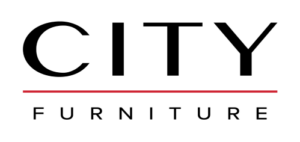City Furniture
Redefining In-Store Sales & Team Management

Details:
Team:Client Executive Team, UX Designers, Product Manager, Developers, User Experience Manager (Me)
My Role:Client Collaboration, Requirements Gathering, Mockup & Prototype Design, End-to-End Design Oversight
City Furniture struggled with fragmented sales tools that made it difficult for sales representatives to manage customer interactions, access real-time inventory, and process transactions efficiently. Additionally, managers lacked the tools to track team performance and monitor sales progress in real time.
These inefficiencies reduced operational productivity and created barriers to delivering a seamless, high-quality customer experience. A centralized, user-friendly solution was essential to address these challenges and streamline in-store operations.
Splash Page
Featured categories, the latest discounts, and best-sellers, makes it easy for users to browse and explore—all in one place.
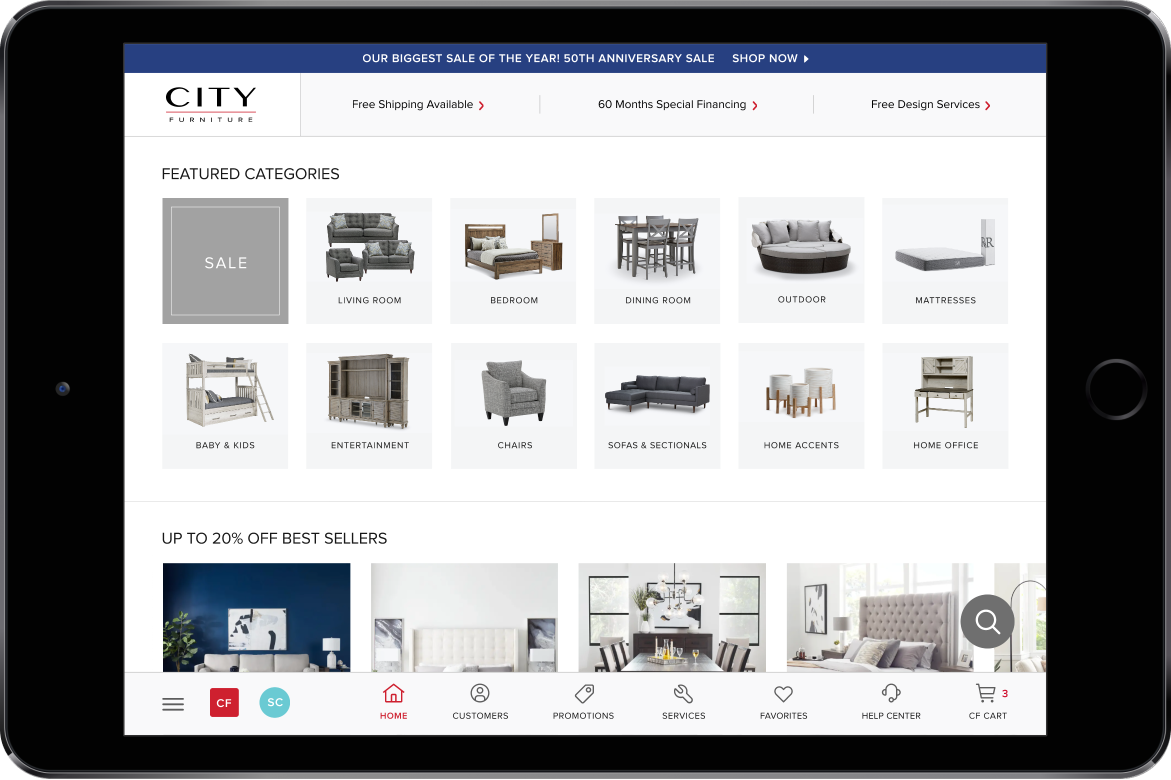
Roles & Responsibilities
As the UX Design Manager for the project, my responsibilities included:
- Collaborating with City Furniture’s executive team to define and document business requirements.
- Translating the client’s vision into actionable specifications to guide the design and development process.
- Managing my UX team, providing oversight and ensuring alignment with human-centered design principles.
- Working hands-on in the Figma prototype to ensure all features were accurately implemented and met client expectations.

Current Promotions
Live offers and specials from the City Furniture website were featured, giving sales representatives and customers easy access to the latest promotions.

Challenges At Hand
FRAGMENTED PROCESSES
- Sales representatives relied on multiple systems for lead management, inventory access, and POS transactions, resulting in inefficiencies and wasted time.
INVENTORY VISIBILITY
- The absence of real-time inventory data caused delays in addressing customer inquiries and finalizing sales.
MANAGERIAL OVERSIGHT
- Store managers lacked comprehensive tools to track live sales performance at both individual and team levels.
CUSTOMER EXPERIENCE
- Disjointed processes and prolonged wait times disrupted the in-store customer journey, negatively affecting satisfaction.
Customer Management
A centralized view of customer opportunities, upcoming appointments, and detailed profiles with the ability to share comments—all in one place.
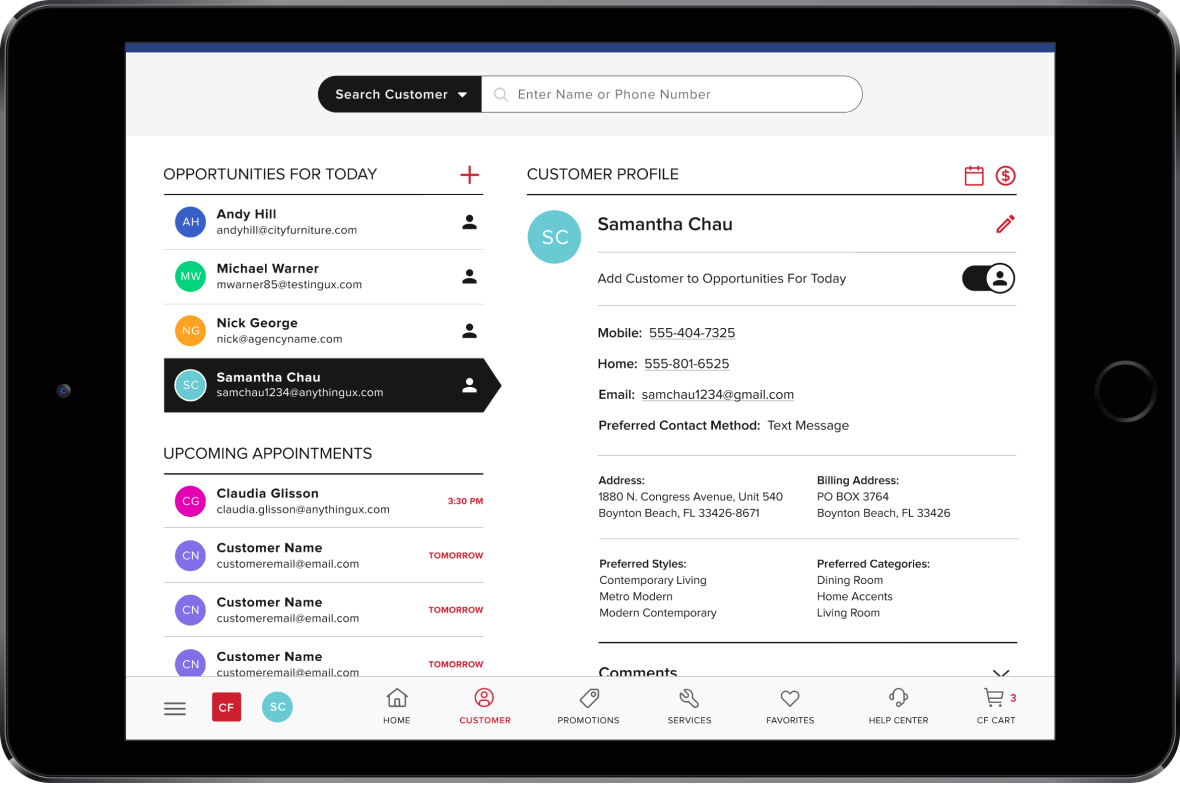
Design Process
RESEARCH
- Conducted stakeholder interviews to identify pain points and operational needs.
- Observed in-store sales activities to map workflows and define app functionality.
REQUIREMENTS DOCUMENTATION
- Collaborated with the client team to define clear, actionable requirements.
- Partnered with the UX team to establish a focused direction for app functionality and features.
MOCKUPS & PROTOTYPES
- Designed high-fidelity mockups and tested them with sales teams to ensure simplicity and usability.
- Created interactive prototypes to simulate in-store scenarios and validate functionality in real-world conditions.
DEVELOPMENT & TESTING
- Adopted Agile development practices to facilitate iterative improvements.
- Conducted thorough testing with pilot sales reps, refining features based on their feedback.

Product Listing
A streamlined product view allows sales reps to easily browse categories, check availability, and quickly find the perfect items for their customers.

Product Detail Page (PDP)
Provides in-depth information, including specifications, customization options, and availability, enabling sales reps to offer detailed guidance to customers.
Swapped the logo to represent their other brand, “Ashley HomeStore.”
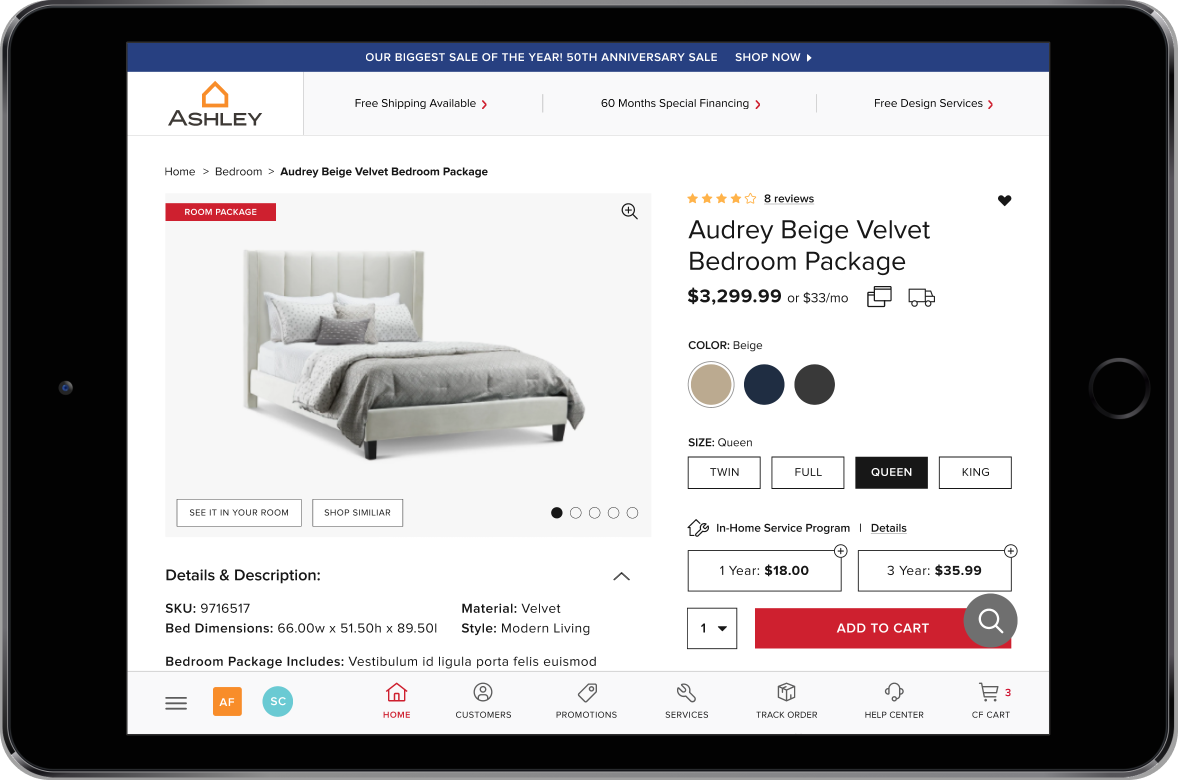
The Solution
A centralized tablet application was imagined, featuring two core interfaces tailored to meet the needs of both sales representatives and store managers.
SALES REPRESENTATIVE POS
- Lead Management: Track and manage customer interactions and sales lifecycle.
- Real-Time Inventory Lookup: Access live updates on stock availability.
- Furniture Configuration: Customize furniture options interactively with customers.
- Integrated POS: Process payments directly on the sales floor.
MANAGERIAL ADMIN DASHBOARD
- Performance Tracking: Monitor team and individual KPIs.
- Sales Progress Visibility: View real-time sale conversions and follow-ups.
- Reporting Tools: Generate detailed sales performance reports.

Shopping Cart
Provides a clear overview of selected items, pricing, and customization details, enabling sales reps to review orders with customers on the spot before checkout.

Cart Upsell
This step in the checkout process helps sales reps seamlessly upsell options to enhance the customer experience.
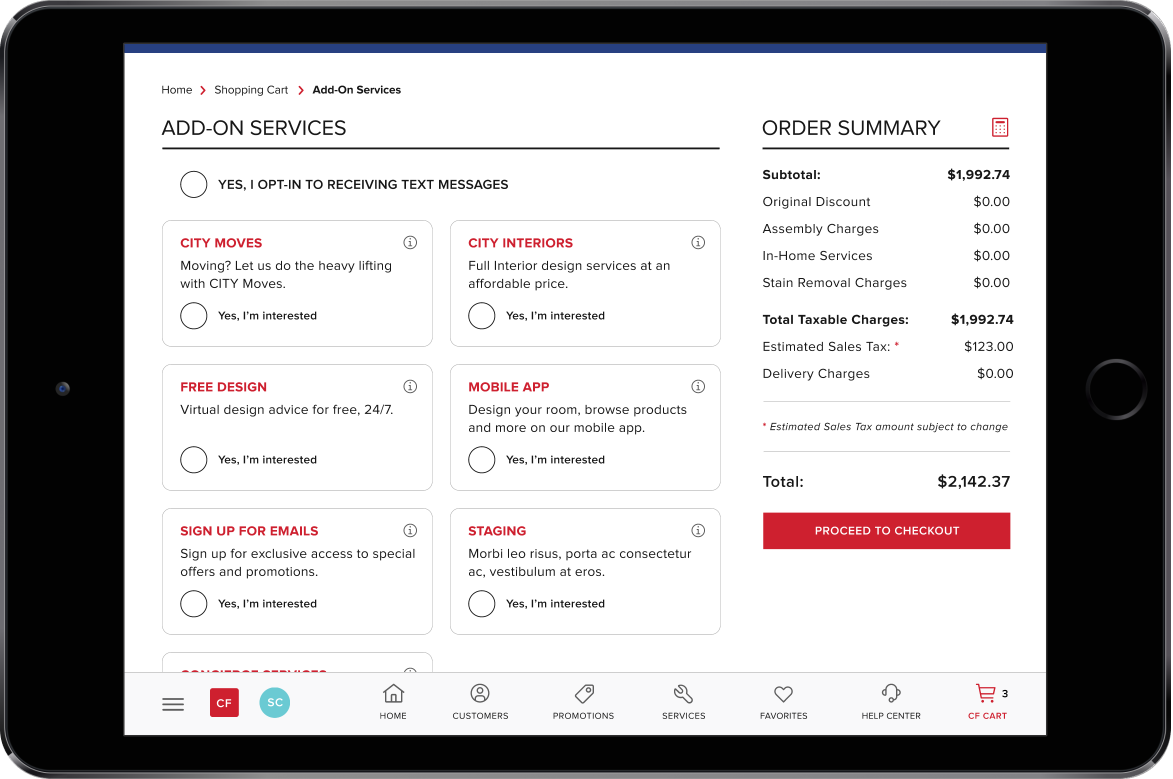
Post-Iteration Results
INCREASED EFFICIENCY
- The app streamlined workflows, reducing the time sales representatives spent switching between stationary computer stations and enabling them to focus more on customer interactions.
ENHANCED CUSTOMER EXPERIENCE
- Customers enjoyed faster transactions, personalized furniture customization options, and a smoother, more fluid sales process.
IMPROVED SALES PERFORMANCE
- Enhanced lead tracking and follow-up capabilities resulted in higher conversion rates and greater overall sales success.
DEEPER INSIGHTS
- Managers gained comprehensive visibility into team performance and sales progress, empowering more informed decisions and strategic adjustments.
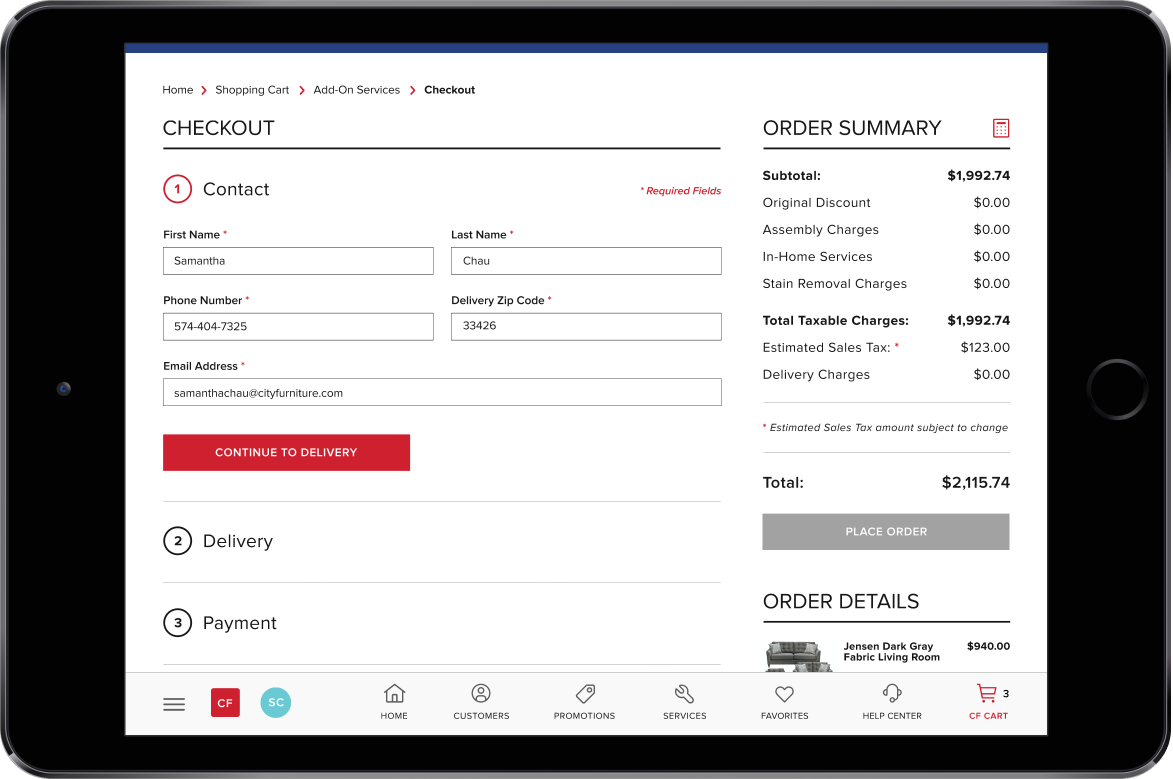
Checkout Flow
An accordion-style checkout guides users through adding their information, delivery, and payment options, ensuring a clean interface and keeping customers focused on completing each stage quickly.

Project Conclusion
The City Furniture POS Tablet App enhanced in-store sales operations by combining streamlined tools for sales representatives with powerful analytics for managers. The app enhanced efficiency, improved customer experiences, and drove sales growth. This project showcases the impact of user-centered design and collaborative development in delivering transformative business solutions.
